In April 2022, as part of announcing a comprehensive program to deepen nuclear industrial self-sufficiency, the Islamic Republic of Iran announced it was going to build a new 10 megawatt-thermal (MWth) research reactor, aka IR-10 reactor, at the Esfahan Nuclear Technology Center (INTC).
Site preparation started in late October 2022. On October 27, 2022, the head of the Atomic Energy Organization of Iran (AEOI) Mohammad Eslami and a group of senior managers of the country's nuclear industry held a small ceremony at the site to mark the start of construction (see Figure 1).[1] In early February 2024, Eslami led another more formal ceremony tied to commencing the pouring of concrete for the reactor (see Figure 2). [2] One year later, construction has visibly progressed but is far from completion. The status of the manufacture of reactor components and equipment is unknown, but they have not yet been installed. Estimating a completion date is not possible, but it appears to be several years away.
While Iran emphasizes the peaceful nature of the new reactor in Esfahan, stating that it is intended solely for civilian purposes, concerns remain that Iran's new activity will further Iran's ability to produce and separate plutonium for nuclear weapons and enable the construction of a larger reactor designed to make significant amounts of weapon-grade plutonium for nuclear weapons. This concern is elevated because of the unclear involvement of military organizations, making it difficult to balance both the potential proliferation risks and Iran's right of peaceful nuclear energy under the Nuclear Non-Proliferation Treaty (NPT).
In addition, this reactor project raises the prospect of Iran exporting this capability to other countries in the Middle East and elsewhere. It could export copies of this reactor, its components, related equipment, and technology. This causes concern, because Iran would be expected to make these exports outside of international nuclear export control regimes or regulations, contributing to nuclear proliferation elsewhere.
Iran also remains far away from implementing an effective national export control regime compatible with the standards and rules of the Nuclear Supplier Group (NSG). Moreover, Iran has shown no willingness to support international efforts for the non-proliferation of weapons of mass destruction (WMD). There could be inadvertent leakage from Iran of sensitive nuclear technology or the uncontrolled spread of dual-use items.
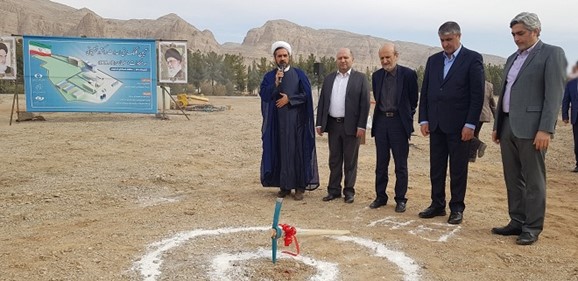
Figure 1. October 25, 2022, ceremony to commence the construction of the Esfahan 10 MWth reactor. Source: AEOI.

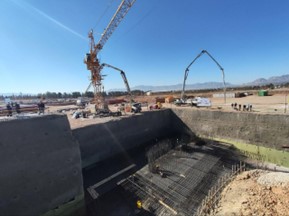
Figure 2. Ground image of the construction of the Esfahan research reactor in early February, 2024. [3]
The Reactor's Purpose
This reactor has been planned for a long time. In 2013, Le Figaro reported that a 10 MWth research reactor was publicly mentioned in April 2013 by then head of the AEOI Ferydoun Abbasi Davani. [4] This reactor may have also been included in an AEOI public announcement in 2013 of plans to build four reactors. [5] Needless to state, the IR-10 reactor project was delayed.
During ceremonies at the reactor site in 2024, AEOI head Eslami outlined the primary objectives for which the research reactor is designed. He emphasized fuel performance testing, production of industrial radioisotopes and medical isotopes, development of neuron beamlines for various applications such as radiography, material analysis, production of silicon semiconductors and cold neutron sources. He also stated that the reactor would create suitable capacities for Iran to export products and services at the regional and global levels.
Officials have described this 10 MWth multi-purpose research reactor as a pool-type reactor, cooled and moderated by light water. The reactor will use uranium oxide-aluminum fuel plates, enriched to near 20 percent.
Le Figaro reported in its 2013 article that the site would hold hot cells, a normal feature of research reactors, but also a feature that raises concern about the potential to separate small quantities of plutonium and reprocess a variety of irradiated fuel.
The available reporting does not explain why this new reactor is necessary for the purposes stated above, when Iran is also building the Arak reactor which is four times more powerful and far more able to satisfy the above purposes. One possible explanation is that this reactor project does not have the tightly controlled limitations created by the Joint Comprehensive Plan of Action (JCPOA) that have directly involved Chinese and European nuclear technology. Possibly more importantly, the key modifications at the Arak reactor are not being done by Iran, at odds with Iran's 2022 comprehensive plan to deepen its indigenous ability to build nuclear reactors.
Reactor Site Plans
In the background in Figure 1 is a billboard with a graphic of the planned reactor site, enlarged in Figure 3. This graphic is labeled IRR-10 which simply adds "research" to the name, i.e., the Iranian Research Reactor-10 MWth, an acronym convention used in other official descriptions.
Visible in the schematic is a reactor building, a four cell, forced-draft cooling tower deck, a ventilation stack (next to the reactor building . The reactor does not have any dome. The long buildings adjacent to the reactor could hold irradiated fuel ponds and hot cells.
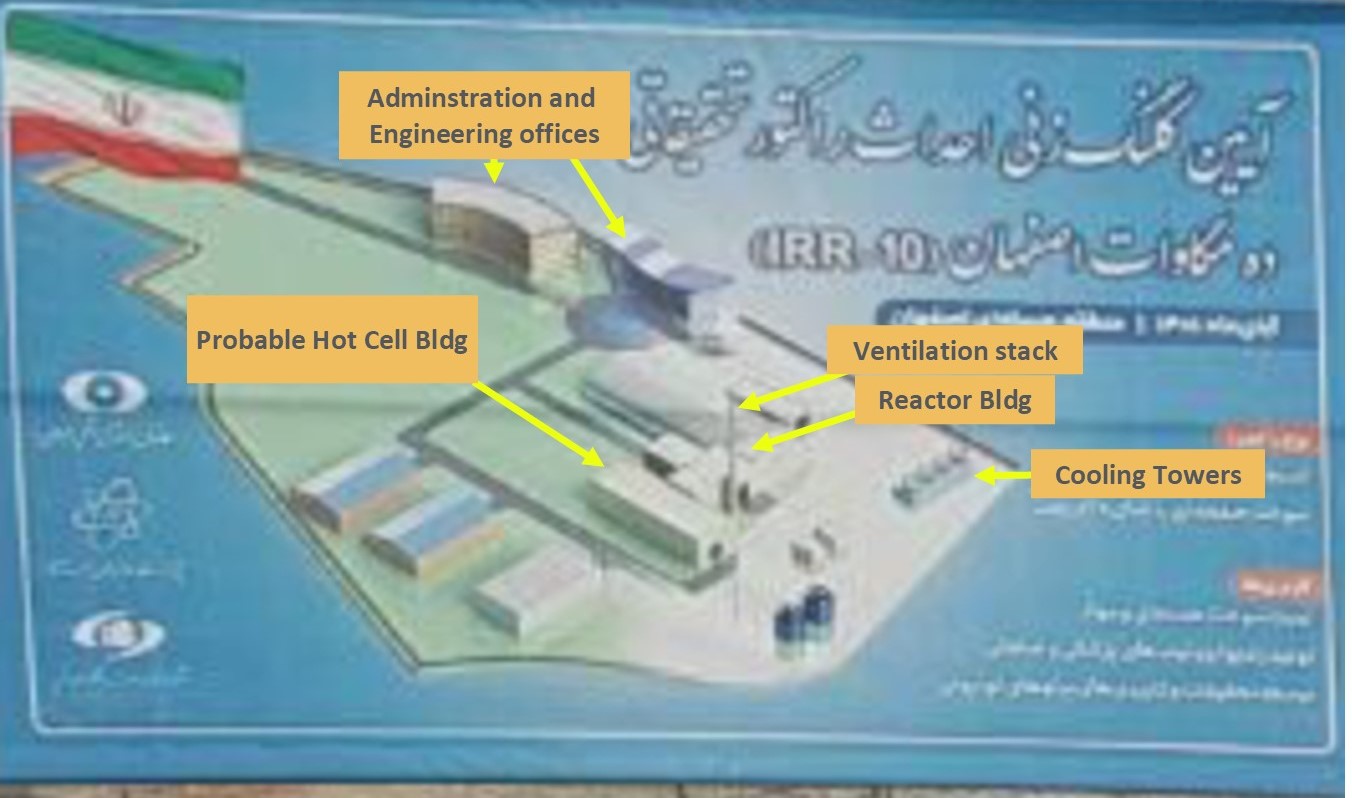
Figure 3. A schematic prepared for the ceremony commencing site preparation of the IR-10, aka IRR-10, research reactor. The symbols on the left represent Iranian entities. The top one is the emblem of the AEOI, and the one in middle represents the Nuclear Science and Technology Research Institute (NSTRI), but the one on the bottom could not be identified. Source: See Figure 1, AEOI. Annotations by the Institute for Science and International Security
Pace of Progress
Figure 4 compares construction progress from November 2022 up to the end of 2024. A comparison of the images shows that the construction project has made substantial progress, including building the reactor base of the core area, which will be deeply below grade. Two very large construction cranes are visible in the December 26, 2024, image.
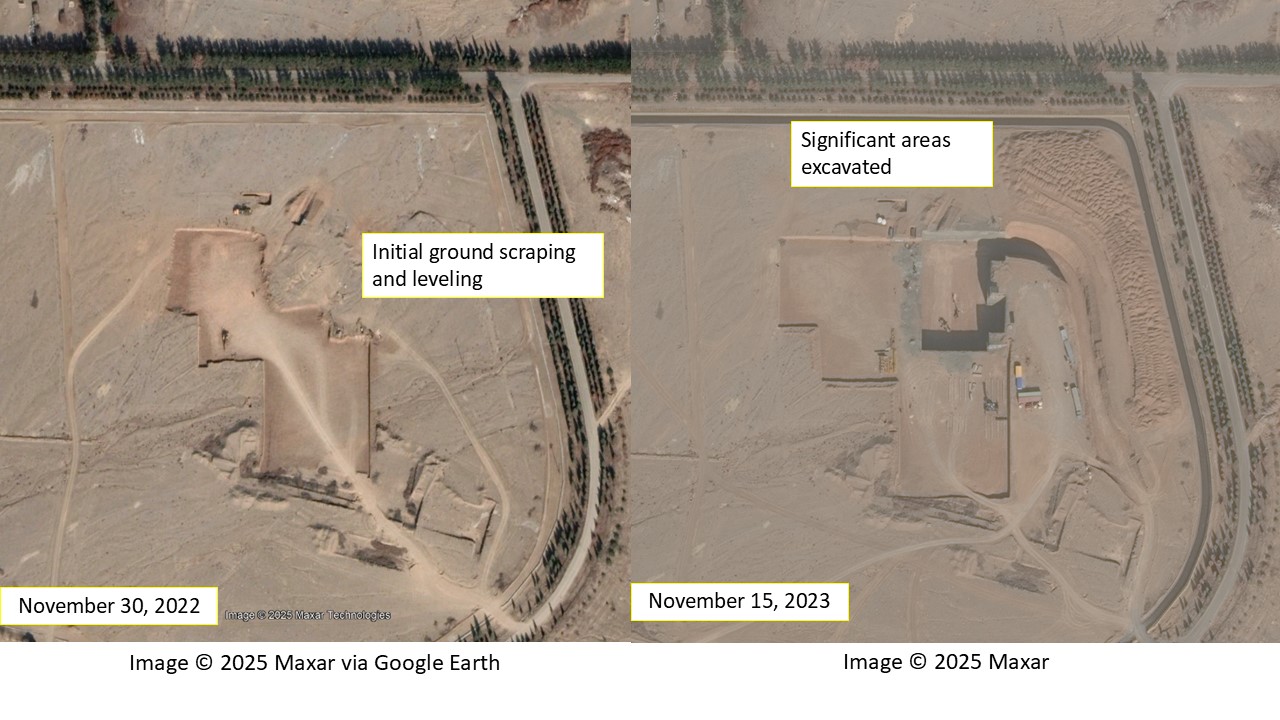
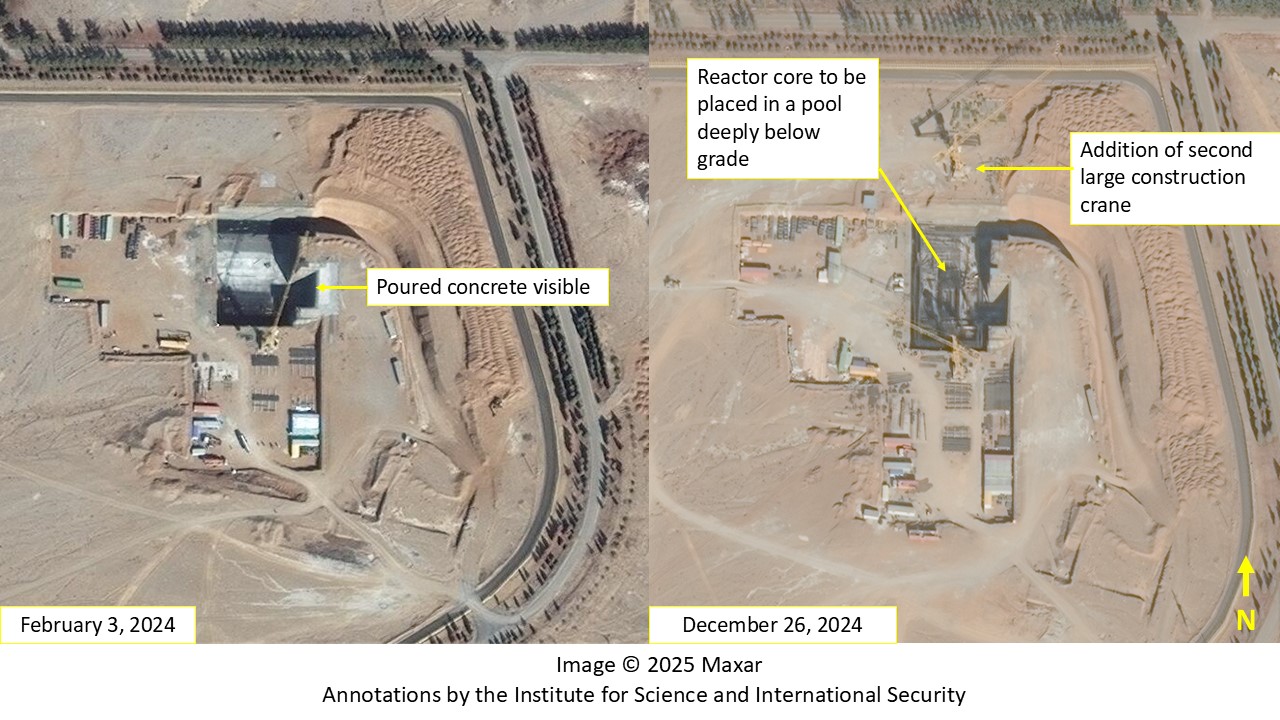
Figure 4. Esfahan research reactor construction progressed visibly over the last three years but is far from completion. Visible is the reactor area, which is below grade, consistent with the low-roofed reactor building seen in the schematic in Figure 3. The location of the irradiated fuel pond and hot cells cannot be definitively identified
The Web of Support Organizations
The AEOI chief Eslami has underscored that the country's nuclear industry is sufficiently advanced to build and operate this reactor. Although illicit procurements of dual-use goods are likely still required for this and other reactor projects, Eslami's comments reflect the continuing growth of a domestic industrial infrastructure to manufacture nuclear reactors of various sizes. [6]
The construction of the Esfahan reactor requires the involvement of several companies. Insight into these companies can be gained from multiple leaked documents from Iran's nuclear sector, which provide information about the network of public and quasi-private organizations supporting the design and construction of the Esfahan research reactor or, as it is called in the documents, the IR-10 reactor.
Via its public offices such as the Ministry of Energy or the Ministry of Labor the Islamic Republic has a record of establishing private companies or privatizing previously public companies by selling the stock to another public entity or people close to power. These companies remain under total government control, functionally serving as a state entity, but keep the appearance of a private company. This, among other things, gives the regime the ability to delegate sensitive work out of the public sector, making it complicated to track it back to the regime bodies such as the AEOI, but ensuring the regime continues to have influence over them as the main shareholders.
A number of those quasi-private companies are found to be involved in the Esfahan Research Reactor project. Based on a project committee list from November 2021, the AEOI is identified as the client for the Esfahan Research Reactor project, and the Nuclear Power Production and Development Company (NPPD), a subsidiary of the AEOI, serves as the project manager. [7] The project's consultant is the Nuclear Power Plant Engineering and Construction Company which is known by its Farsi abbreviation as MASNA and is 49 percent owned by NPPD, and the majority of the rest of it is owned by Energy Novin Company, a private company itself largely owned by the AEOI. [8] A meeting note from the Energy Novin Company indicates that it began discussing construction of the Esfahan reactor in 2013, with a possible incentive to export the capability to other countries in the Middle East.
An interview from 2016 in a leaked document by the then NPPD manager Mohammad Ahmadian sheds some light on the reason for deployment of quasi-private companies and their function in providing a cover for potentially sensitive activities. It is noteworthy that Ahmadian's interview was released to the public after removal of the following quote, which discusses the strategy of establishing private organizations parallel to the AEOI:
"After the victory of the Islamic Revolution [in 1979], the officials of the organization [AEOI] felt that certain activities necessary for advancing the nuclear industry were not progressing well within the framework of state-owned companies. Therefore, a separate entity was established alongside the organization, and many nuclear achievements are owed to the efforts made in this domain. This experience has also been implemented in other institutions, with one notable example being the MAPNA company under the Ministry of Energy. Similarly, the organization established such an entity, and certain activities requiring support, such as the construction of the Arak heavy water reactor, were carried out within this framework.
When, after the JCPOA, it was decided to redesign this reactor, the officials concluded that it was unnecessary to continue the redesign of the Arak reactor in the same previous framework. Given that, under the JCPOA, we have a transparent project that has been approved by the international community, they decided to allocate this project a specific line in the national budget. Through this, a state-owned company, as the employer, could utilize public funds for the project. Following this decision, the capabilities developed in the non-governmental sector over years of work on the Arak and Darkhovin reactors were consolidated. A strong engineering and operational capacity was mobilized to act as the project's executor." [9]
Ahmadian does not explicitly say what those "certain activities" were that could not have been pursued within the government. However, he gives certain clear clues. He mentions that the construction of the pre-JCPOA Arak heavy water reactor was one of those activities without further explaining what exactly the role of those companies was. At least part of the purpose of that arrangement was to maintain secrecy, and indeed, the Arak reactor project was secret until mid-2003. [10] He mentions that after the implementation of the JCPOA, when the Arak project was supposed to be transparent, those companies were integrated within the government, clearly implying that they were intended to pursue certain projects (such as the pre-JCPOA Arak project) in secret. [11] This interview and the fact that this section of the interview was removed from the published text further indicate that those companies were established to disguise some nuclear work-for example to circumvent international controls and sanctions banning Iran's procurement abroad of reactor or reactor-related items. This is further indicated by these companies being sanctioned much later than the AEOI.
Ahmadian also refers to a consolidation of these capabilities under the process of the negotiation and implementation of the JCPOA. This had a further benefit in the initial years of the JCPOA of providing an avenue for these companies to acquire many relevant technologies to design and build reactors and manufacture key equipment and reactor components. [12]
An organization which is very likely involved in the construction of the Esfahan Research Reactor is the Nuclear Power Plant Construction and Commissioning Company known by its Farsi abbreviation as SURENA. This is because in multiple undated documents introducing AEOI subsidiary organizations, one of the objectives mentioned for SURENA is "designing a pool-type 10 MW research reactor (IR-10)." [13] In one of the documents it is implied that SURENA started as an Energy Novin Company, but later, as part of a coordination effort for the renovation of the Arak Research Reactor following the JCPOA, forty-nine percent of its stock moved to NPPD.
The documents mention three companies as the end users of the project. Those companies are the AEOI subsidiary Nuclear Science and Technology Research Institute (NSTRI), and two other quasi-private companies, Radiation Applications Development Company, and Pars Isotope Company.
Export and Proliferation Concerns
Iran's emphasis on building reactors indigenously raises nuclear proliferation concerns. This concern is further elevated because of the historical and possibly on-going involvement of military organizations in Iran's nuclear program, increasing the potential proliferation risks of its nuclear reactor program.
With regards to the new Esfahan reactor, there is direct concern that the regime could use this reactor to make headway on producing limited quantities of plutonium in natural or depleted uranium targets, where the near 20 percent enriched uranium fuel would serve as the driver rods producing the neutrons that irradiate the uranium in the targets, resulting in plutonium. The facility will have hot cells, and they may be used for reprocessing or plutonium separation developments. Success in building this reactor could also allow for the construction of a larger reactor, able to make much greater quantities of plutonium for nuclear weapons.
Suspicions about Iran's reactor projects are also heightened because Iran is in violation of its mandatory reporting requirements under subsidiary arrangements to Iran's comprehensive safeguards agreement (CSA), modified Code 3.1. The code requires Iran to provide notification and design information when it has made a decision to build or authorize construction of a nuclear facility, let alone start construction of a new nuclear facility. Iran has not done so for the IR-10 reactor, despite repeated requests by the International Atomic Energy Agency (IAEA). [14]
Iran is likely undertaking illicit procurements to build this reactor and bolster the capabilities of the companies that are building this reactor and other ones, including the Darkhovin reactor. Over the years, these companies have illicitly procured dual-use goods, intangible transfers of technology from abroad, and scientific collaboration with foreigners. This raises the need to better enforce sanctions and export controls on Iran's civil nuclear industries.
Another concern is Iran's export of its nuclear reactor capabilities. From the inception of the Esfahan reactor project, a major driver has been its potential for export. In the future, it could sell copies of the Esfahan reactor, or its components, technology, and related equipment outside of international export control regimes and proliferation norms, weakening those regimes and potentially contributing to nuclear proliferation. There is evidence that exports of nuclear power reactor technology are already happening via AEOI´s international nuclear training center, which provides education and training on dual-use technologies to international students and practitioners. Exports of tangible nuclear-related dual-use goods may also have occurred already.
Iran is far away from any kind of implementation of a national export control regime that is compatible with Nuclear Supplier Group rules. [15] Moreover, it has not demonstrated any willingness to support international efforts for the non-proliferation of WMD. With its lax controls, Iran may not be able to contain the inadvertent transfer of sensitive nuclear technology or the uncontrolled spread of dual-use items.
Coupled with its intense drive to acquire the wherewithal to build nuclear reactors, Iran may become a locus for the spread of nuclear power reactor technology, equipment, and materials, both deliberately and inadvertently, to actors, sanctioned or otherwise, seeking unsafeguarded nuclear capabilities or aiming to build nuclear weapons. This raises further alarm within the international community and highlights the security implications that such autonomy might have at both regional and global levels.
1. "The construction of a 10-megawatt research reactor in Isfahan has begun," Government of the Islamic Republic of Iran, translated from Farsi, October 27, 2022, https://dolat.ir/detail/398432. ↩
2. "The construction of the fourth nuclear reactor in Isfahan has begun," IRNA, translated from Farsi, February 5, 2024, https://irna.ir/xjPHY7. [↩]
3. "Commencement of the construction of a 10-megawatt research reactor in Isfahan / Iranian experts are building this project with modern global technologies," translated from Farsi, February 5, 2024, https://tn.ai/3034595. [↩]
4. Pierre Rousselin, "Iran: 'IR-10' the Secret Factory for a Plutonium Bomb," Le Figaro, November 20, 2013, in French, title translated, https://www.lefigaro.fr/international/2013/11/20/01003-20131120ARTFIG00580-iran-ir-10-l-usine-secrete-pour-une-bombe-au-plutonium.php. [↩]
5. Stephanie Nebehay, "Iran says it's ready to resume talks with world powers," Reuters, April 25, 2013, https://www.reuters.com/article/uk-iran-nuclear/iran-says-its-ready-to-resume-talks-with-world-powers-idUKBRE93O0S420130425/. [↩]
6. For a discussion of a larger reactor project, see David Albright and Mohammadreza Giveh, "Darkhovin Nuclear Power Reactor: Another Blemish on Iran's Safeguards Compliance," Institute for Science and International Security, March 2024, https://isis-online.org/isis-reports/detail/darkhovin-nuclear-power-reactor-another-blemish-on-irans-safeguards-complia/8. [↩]
7. "Technical Committee Document for the Design and Construction of the IR-10 Research Reactor Project," November 30, 2021. [↩]
8. People on the board of the Energy Novin Company are affiliated with the AEOI. [↩]
9. An email from the hacked documents titled "Dr. Ahmadian's interview with Khorasan newspaper regarding the groundbreaking of the new Bushehr units," July 5, 2016. [↩]
10. The Arak reactor depended extensively on secret foreign assistance. It was discovered that Russian entities and companies in the 1990s were deeply involved in providing Iran with reactor technology for the Arak reactor, including fuel design. See Institute for Science and International Security, "Update on the Arak Reactor in Iran," August 25, 2009, https://isis-online.org/uploads/isis-reports/documents/Arak_Update_25_August2009.pdf. [↩]
11. Ahmadian mentioned MAPNA as another example. In brief, MAPNA is a large private contractor making power plants and related equipment that is 47 percent owned (and controlled) by Mahab Ghodss Consulting Engineering Company. The Energy Ministry is the main stockholder of Mahab Ghodss, and it is sanctioned by the U.S. for involvement in building Bushehr Nuclear Power Plant. [↩]
12. "Darkhovin Nuclear Power Reactor: Another Blemish on Iran's Safeguards Compliance." [↩]
13. An untitled, undated two-page Word document introducing SURENA and a similar PowerPoint presentation explaining various AEOI related organizations. [↩]
14. See for example, IAEA quarterly reports on Iran, GOV/2024/29 and GOV/2023/43. [↩]
15. David Albright, Sarah Burkhard, Spencer Faragasso, and Linda Keenan, Peddling Peril Index, Institute for Science and International Security, August 8, 2024, https://isis-online.org/ppi/detail/available-now-the-peddling-peril-index-for-2023-2024/. [↩]






